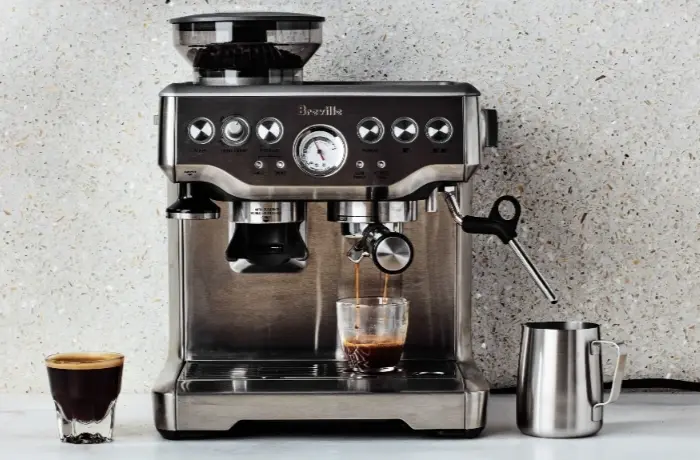Espresso and coffee are two of the most popular ways to enjoy caffeine, but they are made very differently. While both come from coffee beans, the brewing methods, flavors, and textures set them apart. This article will explore how espresso is made compared to regular coffee, the equipment used, and the key differences in taste and strength.
What is Espresso?
Espresso is a concentrated coffee made by forcing hot water through finely-ground coffee beans under high pressure. The result is a thick, strong shot with a layer of crema on top—a golden foam that adds richness.
Espresso is the base for many coffee drinks, like lattes, cappuccinos, and Americanos. Because of its intensity, it’s served in small amounts, usually 1-2 ounces per shot.
What is Regular Coffee?
Regular coffee, often called drip coffee, is made by steeping coarser coffee grounds in hot water. The water passes through the grounds slowly, extracting flavors without pressure. This method produces a milder, larger cup of coffee, typically 8-12 ounces per serving.
Common brewing methods include drip machines, pour-over, French press, and cold brew. Each technique affects the taste, strength, and body of the coffee.
How Espresso is Made
The Beans
Espresso is usually made from dark or medium roast beans for a bold, rich flavor. However, some specialty cafes use lighter roasts for a brighter taste. The beans must be freshly ground to a fine consistency—almost like powdered sugar.
The Machine
An espresso machine uses high pressure (9-10 bars) to push hot water (about 195-205°F) through the coffee grounds. This process takes 25-30 seconds and extracts intense flavors and oils.
The Grind
Espresso requires a fine grind to create resistance against the water. If the grind is too coarse, the water flows too quickly, making weak espresso. If it’s too fine, the water struggles to pass, leading to over-extraction and bitterness.
The Tamping
After grinding, the coffee is packed into a portafilter and tamped down firmly. This ensures even water distribution and proper extraction.
The Extraction
When the machine starts, hot water is forced through the grounds, producing a 1-2 ounce shot with a rich, syrupy texture and a layer of crema—the signature foam on top.
How Regular Coffee is Made
The Beans
Regular coffee can use any roast—light, medium, or dark. The grind size depends on the brewing method:
Drip coffee: Medium grind
French press: Coarse grind
Pour-over: Medium-fine grind
The Brewing Method
Unlike espresso, regular coffee doesn’t use pressure. Instead, water slowly extracts flavors through:
Drip machines: Hot water drips through a filter.
French press: Coffee steeps in hot water before being pressed.
Pour-over: Water is manually poured over grounds in a filter.
Cold brew: Coffee soaks in cold water for 12-24 hours.
The Extraction Time
Regular coffee takes longer to brew—anywhere from 2-5 minutes for hot coffee to 12-24 hours for cold brew. The slower extraction results in a smoother, less concentrated drink.
Key Differences Between Espresso and Coffee
Brewing Method
Espresso: High-pressure, fast extraction (25-30 seconds).
Coffee: No pressure, slower extraction (minutes to hours).
Grind Size
Espresso: Fine, powdery grind.
Coffee: Coarser grind (varies by method).
Serving Size
Espresso: 1-2 oz per shot.
Coffee: 8-12 oz per cup.
Flavor and Strength
Espresso: Strong, bold, syrupy, with crema.
Coffee: Milder, smoother, more diluted.
Caffeine Content
Contrary to popular belief, espresso has less caffeine per ounce but more per sip due to its concentration. A single shot (1 oz) has about 63 mg of caffeine, while an 8-oz cup of drip coffee has 95-200 mg.
Which One Should You Choose?
Choose espresso if: You like strong, intense flavors or want a base for milk-based drinks (lattes, cappuccinos).
Choose regular coffee if: You prefer a larger, milder drink to sip slowly.
Both have their unique qualities, and the best choice depends on your taste and mood!
Conclusion
Espresso and coffee come from the same beans but are made differently. Espresso is quick, pressurized, and strong, while regular coffee is brewed slowly for a milder taste. Understanding these differences helps you appreciate each method and choose the right one for your caffeine fix. Whether you prefer a sharp espresso shot or a smooth cup of drip coffee, both offer delicious ways to enjoy coffee’s rich flavors.
Related topics:
How to Make Good Espresso with a Stovetop
How to Brew Espresso in Keurig
Nespresso Cold Brew Vertuo: A Revolution in Coffee Enjoyment


